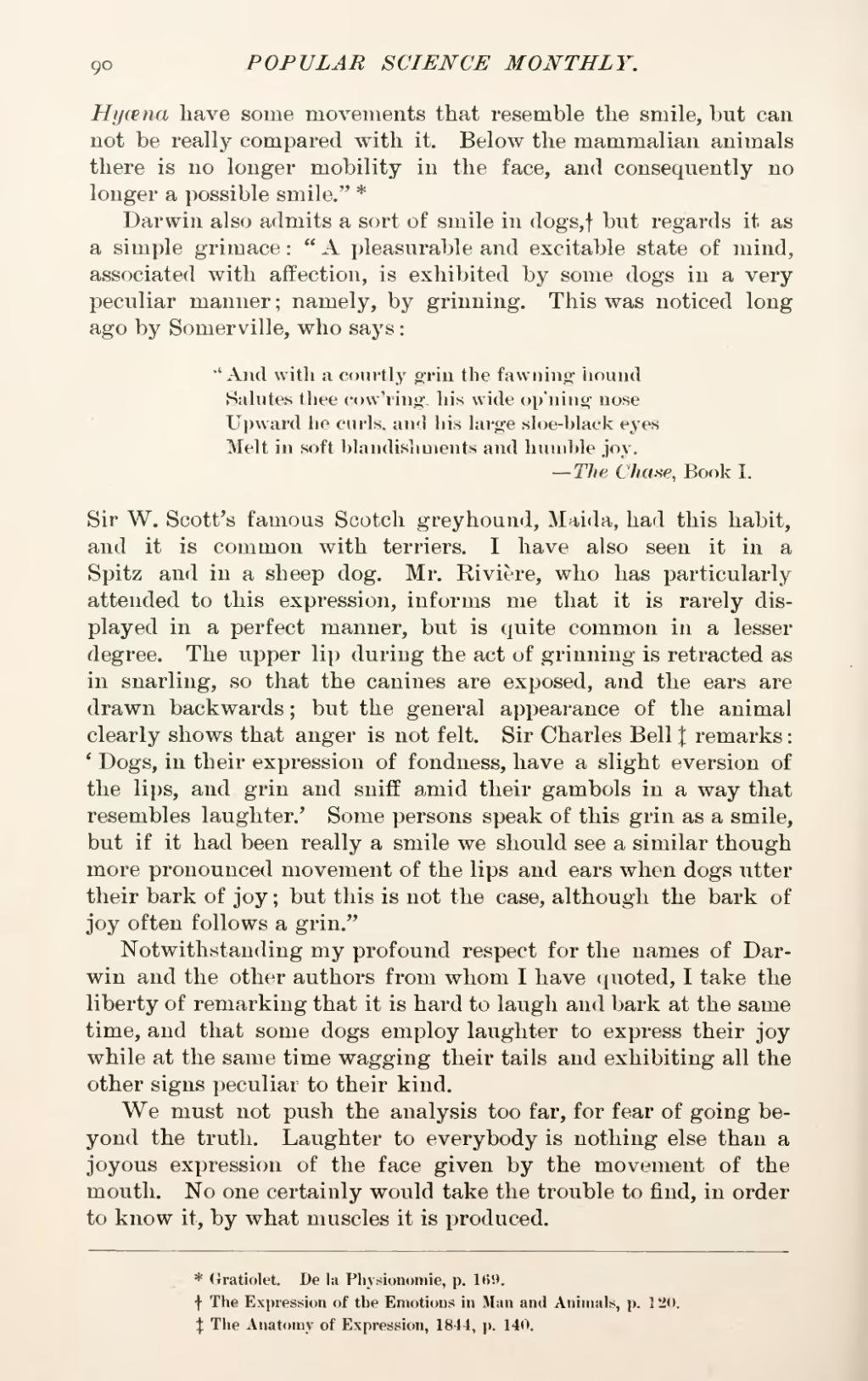Hyæna have some movements that resemble the smile, but can not be really compared with it. Below the mammalian animals there is no longer mobility in the face, and consequently no longer a possible smile."[1]
Darwin also admits a sort of smile in dogs,[2] but regards it as a simple grimace: "A pleasurable and excitable state of mind, associated with affection, is exhibited by some dogs in a very peculiar manner; namely, by grinning. This was noticed long ago by Somerville, who says:
"And with a courtly grin the fawning hound
Salutes thee cow'ring, his wide op'ning nose
Upward he curls, and his large sloe-black eyes
Melt in soft blandishments and humble joy.
—The Chase, Book I.
Sir W. Scott's famous Scotch greyhound, Maida, had this habit, and it is common with terriers. I have also seen it in a Spitz and in a sheep dog. Mr. Rivière, who has particularly attended to this expression, informs me that it is rarely displayed in a perfect manner, but is quite common in a lesser degree. The upper lip during the act of grinning is retracted as in snarling, so that the canines are exposed, and the ears are drawn backwards; but the general appearance of the animal clearly shows that anger is not felt. Sir Charles Bell[3] remarks: 'Dogs, in their expression of fondness, have a slight eversion of the lips, and grin and sniff amid their gambols in a way that resembles laughter.' Some persons speak of this grin as a smile, but if it had been really a smile we should see a similar though more pronounced movement of the lips and ears when dogs utter their bark of joy; but this is not the case, although the bark of joy often follows a grin."
Notwithstanding my profound respect for the names of Darwin and the other authors from whom I have quoted, I take the liberty of remarking that it is hard to laugh and bark at the same time, and that some dogs employ laughter to express their joy while at the same time wagging their tails and exhibiting all the other signs peculiar to their kind.
We must not push the analysis too far, for fear of going beyond the truth. Laughter to everybody is nothing else than a joyous expression of the face given by the movement of the mouth. No one certainly would take the trouble to find, in order to know it, by what muscles it is produced.
- ↑ Gratiolet. De la Physionomie, p. 169.
- ↑ The Expression of the Emotions in Man and Animals, p. 120.
- ↑ The Anatomy of Expression, 1844, p. 140.
